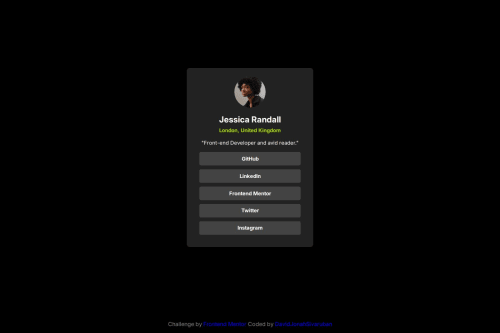Responsive Social Profile Links Page

Solution retrospective
I was able to apply the flexbox layout design and see what difference the design makes when i used a CSS Reset. My landing has more accessibility this time around thanks to the feedback given by our community for my QR Code project - i used rem as a unit of measurement for font-size.
What challenges did you encounter, and how did you overcome them?my display faced an overflow issue when it came to the mobile view and realized i had to set an initial scale attribute in the meta tag to fix.
i also came across an issue on applying the font sizes i installed based on the design file within my css file. (i tried using var (), but it didn't work - i just put the inter font and bolded it for certain texts).
What specific areas of your project would you like help with?- how do i use the var () in terms of inputting fonts and color schemes in css?
Please log in to post a comment
Log in with GitHubCommunity feedback
No feedback yet. Be the first to give feedback on David Jonah S.'s solution.
Join our Discord community
Join thousands of Frontend Mentor community members taking the challenges, sharing resources, helping each other, and chatting about all things front-end!
Join our Discord